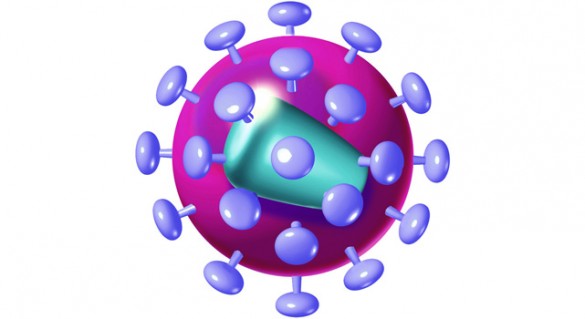Emerging viral infections like Zika keep popping up around the world in such quick succession that medicine is having a hard time keeping up. It can take 15 years and more than a billion dollars to bring a new drug to market.
One possible solution: Identify the anti-viral potential of drugs for other diseases that are already on the market, and “reposition” them to stop epidemics before they start.
That’s what a research team at Vanderbilt University School of Medicine is advocating. In a report published Sept. 15 in the journal PLOS Computational Biology, Donald Rubin, M.D., Zhongming Zhao, Ph.D., and colleagues describe how they used computer-based screening methods to identify 110 potential anti-viral drug targets.
The anti-viral potential of approved drugs must, of course, be confirmed through animal and clinical testing. But “the prospect of drug repositioning … is emerging as a promising alternative to traditional drug design,” especially in combating infectious diseases, the researchers concluded.
Rubin, professor of Medicine and of Pathology, Microbiology and Immunology at Vanderbilt, is co-senior author of the paper with Zhao, a former Vanderbilt faculty member now at the University of Texas Health Science Center in Houston.
First author is Feixiong Cheng, Ph.D., a former Vanderbilt postdoctoral fellow now at the Dana-Farber Cancer Institute and Northeastern University in Boston.
Viruses must hijack factors in the cells they infect in order to make copies of themselves. They’re wily opponents, capable of mutating rapidly to slip through the body’s immune defenses. But they could be thwarted if the host factors they depend upon are identified and blocked.
About a dozen years ago at Vanderbilt, Rubin and colleague H. Earle Ruley, Ph.D., developed a technique for identifying the viral “Achilles’ heel.” Called gene-trap insertional mutagenesis, it’s a way of identifying genes in host cells that are essential for viral replication.
Bits of DNA are inserted randomly throughout the cell’s genome. If insertion occurs in a normally hijacked gene, the virus can’t use it anymore because it’s mutated or “trapped.” Infected cells normally are lysed or blown apart by mushroom clouds of replicating virus. But those with a trapped gene survive.
In this way, the researchers were able to identify approximately 700 host genes that play a role in the replication of 10 distinct mammalian viruses including rhinovirus, Herpes simplex, HIV, polio, and the West African hemorrhagic viruses Marburg and Ebola.
Using bioinformatics analysis, they looked for those with known “drug-gene signatures,” gene-expression responses to drug exposures. The result: 110 host genes that encode proteins already targeted by FDA-approved or investigational drugs or pre-clinical agents.
Seven of the drugs could potentially be repositioned to target host proteins hijacked by Ebola, including the anti-arrhythmic drug ajmaline, the diuretic clopamide and the anti-inflammatory piroxicam (Feldene).
The research was supported by National Institutes of Health grant LM011177.















